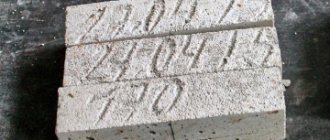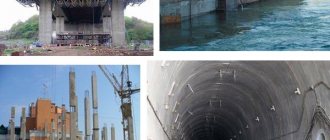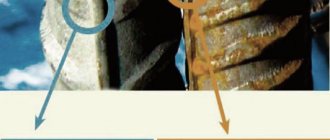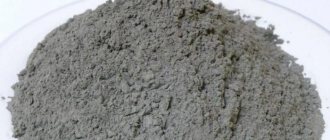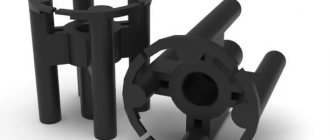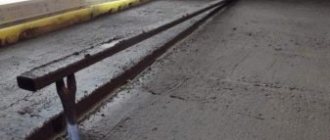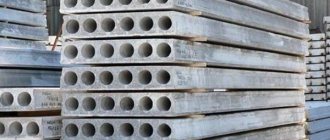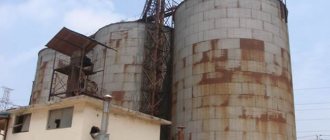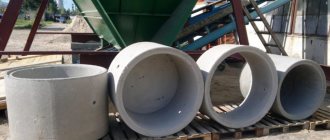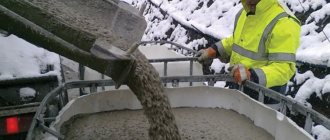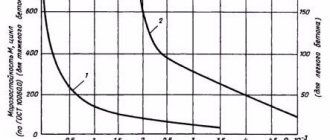Today, not a single large construction project that uses concrete can do without reinforcement. After all, the latter, despite its high strength, is easily damaged when working in bending and tension. Thanks to metal rods, this drawback is eliminated, and the material that has gained sufficient strength is able to withstand significant loads of all types without harm to itself. But for each construction project, different materials and, accordingly, different classes of reinforcement will be the appropriate choice. In one case, it is worth giving preference to thin reinforcement of one grade of steel, capable of working in an aggressive environment for years without harm. And in another you will need thick reinforcement from a different grade of steel. Let's talk about it.
Why are reinforcement classes used?
Today, metal rods are manufactured that differ in a number of factors. To display the characteristics of the material that are most important when choosing for a specific construction project, a special classification of reinforcement was developed. An experienced builder or designer only needs to look at the grade of material to accurately find out all the necessary information:
- manufacturing method;
- Class;
- diameter;
- special properties.
In the same way, when performing design or construction work, a professional can easily imagine all the loads that the material will have to withstand and accurately name the class of reinforcement that will be needed for a particular object. Let's start decoding from the very beginning.
Briefly about the main thing
The strength and durability of reinforced concrete structures is ensured by a reliable hidden frame - reinforcement.
A500C is a dedicated class of reinforcement – not A1 and not A3. It differs significantly from A1 – both externally and in characteristics. In terms of technical and chemical characteristics, A500C is preferable and more versatile than A3 (A400), due to its weldability, strength, and resistance to any type of load.
The feasibility of using reinforcement material is determined at the design stage, after calculations based on many factors. Knowledge of technical requirements, GOST and standards, types and properties of reinforcement, steel grades, and experience in the specifics of their use in construction are important.
How are fittings made?
First of all, the marking of fittings mentions the manufacturing method. For example, in the A240 brand, the letter “A” indicates that the material is hot-rolled or cold-rolled.
Another letter is “At”. It means that you are dealing with heat-strengthened reinforcement. Its cost is higher, since it is more difficult to produce. First, the rod heats up to a temperature of 1000 degrees Celsius, after which it cools to +500 degrees in a matter of seconds. Thanks to this, the rod has much greater strength. Therefore, it finds application in various fields, from construction, when reinforced concrete bears a large load, to mechanical engineering and furniture manufacturing.
Also in some cases the letter “B” is found. It indicates that the reinforcement is cold-formed. In addition, there is the letter “K” - ropes. This is a different specialization, but in order to be able to easily and quickly decipher the class, it will also be useful to remember this letter.
Application in construction
"Armatura" is translated from Latin as "weapons" or "equipment." For construction - from relatively small forms (foundations for private houses, for fences, garages) and to huge civil and industrial facilities - reinforcement is required as an integral part of the frame of reinforced concrete structures.
This steel section is used in the following areas:
- in monolithic construction;
- when laying tunnels;
- construction of bridges and metal structures;
- laying road surfaces;
- production of various concrete products;
- for strengthening foundations, floor slabs and walls.
The reinforcement frame is filled with concrete Source stroysmi.ru
Main types of fittings
The class of reinforcing steel itself is mentioned next. There are six classes in total:
- A240;
- A300;
- A400;
- A600;
- A800;
- A1000.
In addition, in some cases there is a different designation - A1, A2 ... A6. But this designation is considered obsolete - it was used in the Soviet Union and it was the one that was used by the GOST in force at that time. Today, most manufacturers and buyers use a different classification of the range of fittings.
A240 is the only brand that is produced with a smooth section. Its diameter can range from 6 to 40 millimeters. Simplicity of manufacture reduces the cost of the material, but it cannot be used as a main worker - only as an auxiliary one, for example, in the manufacture of a frame. A smooth surface impairs adhesion to concrete, resulting in deterioration of the properties of reinforced concrete. Temporarily can resist stretching up to 380 megapascals.
Fitting class A-I (A240)
All other classes have a periodic cross-section, that is, there are ribs on the surface that improve the quality of adhesion to concrete. For greater clarity, let’s bring all their characteristics together - the table will make it easy to select the appropriate material, as well as understand the meaning of the marking:
| Class | Diameter, mm | Temporary tensile strength, MPa | Yield strength, not less, MPa |
| A-2 | 10—80 | 500 | 300 |
| A-3 | 6—40 | 600 | 400 |
| A-4 | 10—22 | 900 | 600 |
| A-5 | 10—22 | 1050 | 800 |
| AT-4 | 10—40 | 900 | 600 |
| AT-5 | 10—40 | 1000 | 800 |
| AT-6 | 10—22 | 1200 | 1000 |
| AT-7 | 10—32 | 1400 | 1200 |
As you can see, the diameter may vary, which allows you to select the appropriate material for each specific construction project.
Production
Fittings of this class are produced under the control of GOST R 52544-2006 and STO-ASChM 7-93. Low-carbon steel grades 35G2S and 35GS are used as the manufacturing material. The carbon content is no more than 0.22%. For the production of A500C, two methods are used: cold drawn and hot rolled. In the first case, wire and rolled reinforcement is created, in the second - rod reinforcement. It should be noted that rolled products of the second type are characterized by higher strength. The raw materials for A500C contain fewer alloying components than analogues, which ensures a more favorable cost of the final product.
How to determine the diameter?
The most important parameter is the diameter. It determines what load it can withstand, its ductility limit and a number of others. Therefore, when designating the brand of reinforcement, its diameter must be indicated. The entire classification is as follows: A200 D30. It is the last number coming after the letter D or the symbol Ø that shows the thickness of the rod.
Some meticulous buyers, when choosing a suitable material, check its actual thickness with that indicated in the passport using a caliper. They are often surprised by a serious discrepancy - the difference can be several millimeters. However, it is worth considering that with a periodic section (that is, the presence of ribs on the rod), it is impossible to measure the nominal diameter. In narrow places it will be less than the specified value, and on the edges it will be more. Therefore, experts use the average value. Its characteristics are indicated in the tables.
Special properties
Also, fittings are distinguished by purpose. In relatively rare cases, a metal rod must have a number of properties that make it suitable for the application. This is achieved in different ways - by adding special impurities to the alloy or by special processing. In any case, the fittings acquire unique characteristics. The presence of special properties is indicated by the letter at the end of the encoding. The following designations are usually found:
- C – weldable. Usually, when assembling a frame from reinforcement, the use of welding is extremely undesirable - overheating reduces strength and, in addition, reduces resistance to corrosion. But there is a special metal that contains additives that increase its ability to withstand negative consequences;
- K – resistant to corrosion. Thanks to special additives (chrome, tungsten and others), the fittings are able to work for many years not only in conditions of high humidity, but also in contact with an aggressive environment - alkaline, acidic, with a high oxygen content;
- SK is a reinforcement that has both of the above properties. It has a high cost, so it is used relatively rarely, only when the usual one cannot cope with difficult operating conditions.
Of course, there is a special GOST for this product that imposes special requirements on it.
Product classification
There are a huge number of types of fittings. Rolled metal products are classified according to technical characteristics, purpose, design features and many other factors.
The main selection parameter is load resistance , and this is related to the size of the parts and shape.
Piece fittings - angle, I-beam, channel. Such elements can form the supporting frame of a building or bridge. However, when strengthening reinforced concrete structures, they are used individually and in small volumes.
Rod reinforcement – rods made of black or galvanized steel, cold or hot rolled. There are 2 types:
- smooth – without relief on the surface;
- corrugated - or periodic, on their surface there are protrusions with a certain pitch. Ribbed rods are better secured in a concrete slab.
Mesh - rods are laid perpendicular to each other and welded. There are heavy meshes - made from rods with a diameter of 10 to 40 mm, and light ones, made from rods with a diameter of 3-10 mm. The first ones are produced in the form of flat cards and are often used as the basis for a three-dimensional frame. Lightweight mesh is offered in roll form and is more often used for screeding.
This is the most approximate classification, allowing the builder to decide what type of rolled metal is required for the slab, floor, grillage.
By material
Based on this feature, two types of reinforcement .
- Metal – made from different types of steel. The frame made of such rods is extremely strong, providing maximum resistance to bending and tensile loads. When constructing a frame, the rods can be bent, welded, or tied with wire.
- Composite - used for manufacturing glass fibers, basalt, carbon. Fiberglass reinforcement is usually used in cases where it is necessary to prevent the passage of current. Basalt mesh is often used to strengthen masonry made of porous or cellular concrete.
Polypropylene mesh for plaster is also a type of reinforcement and works in exactly the same way as iron mesh, but only in a thin layer of material.
By design
The load in a structure is rarely distributed evenly over the area. More often you have to spend a long time with tension in one direction. Based on the orientation of the rods in the frame, they are distinguished:
- transverse reinforcement – prevents the appearance of cracks and shear stresses near supports, and also connects tension zones and compression zones, redistributing the load;
- longitudinal - absorbs tensile or compressive stress and does not allow vertical cracks to form.
Metal structures often combine longitudinal and transverse reinforcement.
By purpose
The purpose of products is also determined by manufacturing technology . Sometimes the last factor turns out to be more important.
- Working – provides higher resistance to loads. The elements perceive force in fractions of the main load. For prestressed reinforcement, it is allowed to take only material of the working category.
- Constructive - or distributive. Its task is to prevent displacement and the formation of cracks under the influence of the temperature factor, during expansion or shrinkage of the base material. It is installed in areas most subject to local load and distributes it over the entire area. The cross-section of elements is calculated based on the minimum percentage of reinforcement.
- Assembly – combines structural and working reinforcement into a single whole. Increases resistance to various types of loads.
- Anchor – embedded parts made of round, angle or strip steel, which are placed in the structure before concreting. They are used to connect reinforced concrete structures to each other by welding.
From a structural point of view, working or installation elements can have very different appearances.
